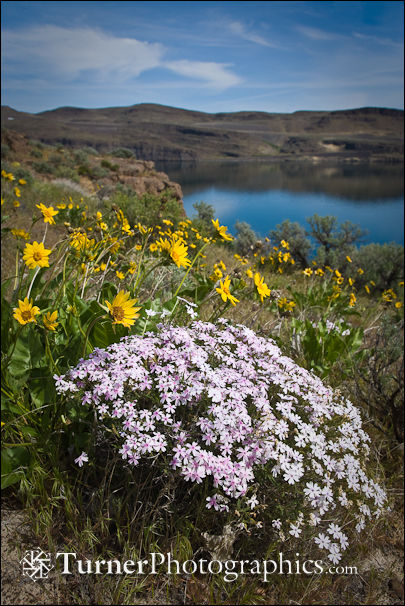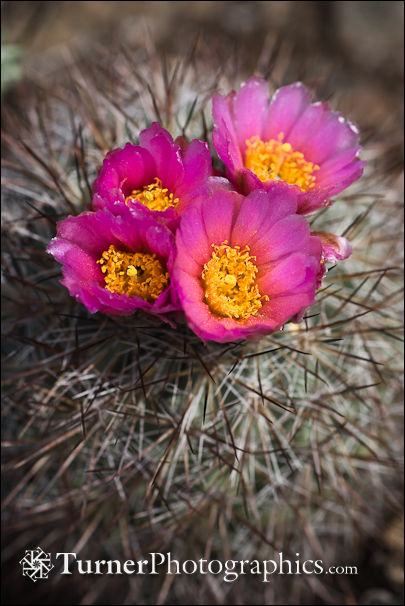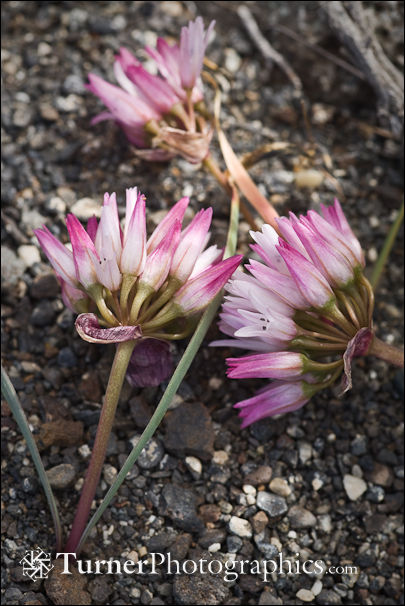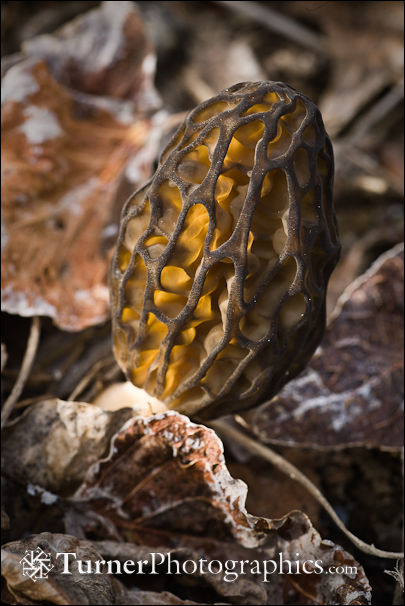Wanapum and Whiskey
 A couple of weeks ago I was over to Ellensburg for the semi-annual board meeting of the Washington Native Plant Society. It’s an all-day business meeting dealing with important affairs of the organization, but not near as much fun as getting out and poking around among the plants.
A couple of weeks ago I was over to Ellensburg for the semi-annual board meeting of the Washington Native Plant Society. It’s an all-day business meeting dealing with important affairs of the organization, but not near as much fun as getting out and poking around among the plants.
The next day Don Knoke, one of the most knowledgeable plant guys in the area, led a field trip along the Old Vantage Highway with stops at Whiskey Dick Wildlife Area and a couple of places in Ginkgo Petrified Forest State Park. We ambled among the grasses and sagebrush, meandered across the lithosol, and threaded our way among the plants on the sandy dunes along Wanapum Reservoir on the Columbia River.
This photo was made near the Ginkgo Petrified Forest State Park visitor center at Vantage, just a hundred yards or so off the road toward the river. Showy Phlox, Phlox speciosa, and Carey’s Balsamroot, Balsamorhiza carreyana, are what’s blooming here. In mid-April you’ll find Showy Phlox carpeting the hillsides in many places throughout central Washington. It truly lives up to its name. Carey’s is just one of several species of Balsamroot. Just over the hill to the west of Ellensburg you’re more likely to find Balsamorhiza sagittata which has somewhat fuzzy leaves and distinctly hairy bracts below the blossoms.
 One of the less common plants in the shrub-steppe is this beautiful Snowball Cactus, Pediocactus nigrispinus. It grows in the lithosol areas, places with thin rocky soils. Sometimes you’ll see fairly large clusters of this showy cactus growing together.
One of the less common plants in the shrub-steppe is this beautiful Snowball Cactus, Pediocactus nigrispinus. It grows in the lithosol areas, places with thin rocky soils. Sometimes you’ll see fairly large clusters of this showy cactus growing together.
The cactus was just beginning to bloom on April 18 so we only found a few specimens with flowers. This was one of the showiest of them. It was on the Whiskey Dick, maybe half a mile up a dirt track from the highway. But there are places along the road where you can find this prickly gem without venturing far from your car if you know where to look. Because they’re somewhat uncommon I won’t divulge my favorite places in a public forum like this.
This is a plant that has undergone a name change recently. It used to be called Pediocactus simpsonii var. robustior. See the entry in Flora of North America if you want to know more.
 Robinson’s Onion, Allium robinsonii, is a Columbia Basin endemic found only in Washington state. It inhabits sand and gravel deposits on lower benches along the Columbia River. The only times I’ve seen them they’ve been growing on almost pure sand. Often there aren’t many of them and they can be hard to spot. I spent a long time searching for this plant when I was working on the wildflowers book, even with good directions from a friend.
Robinson’s Onion, Allium robinsonii, is a Columbia Basin endemic found only in Washington state. It inhabits sand and gravel deposits on lower benches along the Columbia River. The only times I’ve seen them they’ve been growing on almost pure sand. Often there aren’t many of them and they can be hard to spot. I spent a long time searching for this plant when I was working on the wildflowers book, even with good directions from a friend.
These flowers were among a large population of Robinson’s Onions near the Wanapum Campground. There had been several warm days before our visit and most of the onions had pretty much finished blooming. They’re a soft pink when in full bloom and turn a deep rose as they dry out and mature. The plants also tend to lie flat on the sand as they finish blooming.
After poking around for a while I found a handful in the shade of a small sagebrush, protected from the heat of the afternoon sun. Microclimates like this can make all the difference to determine when a plant blooms.
 After the official field trip concluded I went back to Don’s place along the Yakima River near Thorpe. From there we headed upstream a ways to poke around for willows and other trees and shrubs that might be blooming. Under the Cottonwoods along the river, growing in the sand and leaf litter, we almost literally stumbled over these Black Morels, Morchella elata group. A little farther along the boot track we found another species, Morchella esculenta, the Yellow Morel. There weren’t very many of either species and we left them rather than pick them for dinner.
After the official field trip concluded I went back to Don’s place along the Yakima River near Thorpe. From there we headed upstream a ways to poke around for willows and other trees and shrubs that might be blooming. Under the Cottonwoods along the river, growing in the sand and leaf litter, we almost literally stumbled over these Black Morels, Morchella elata group. A little farther along the boot track we found another species, Morchella esculenta, the Yellow Morel. There weren’t very many of either species and we left them rather than pick them for dinner.
Most mushroom hunters won’t reveal the location of their morel patches, and I’m not going to be more specific either. But the river-bottom habitat under Black Cottonwoods is a typical place to find them. Morels typically fruit in the spring in the northwest, unlike most of our mushrooms that come up after the fall rains begin. It’s been a few years since I’ve had the pleasure of dining on a mess of morels. Maybe I’ll stumble across more of them this spring.
 The object of our walk along the river was to find Willows. This one, which I think is Arroyo Willow, Salix lasiolepis, had particularly large catkins. These are the males. Female flowers are on separate plants. That’s one of the things that makes identifying willows so difficult. You have to find both the male and the female plants, and there may be multiple species mixed up together in the same habitat.
The object of our walk along the river was to find Willows. This one, which I think is Arroyo Willow, Salix lasiolepis, had particularly large catkins. These are the males. Female flowers are on separate plants. That’s one of the things that makes identifying willows so difficult. You have to find both the male and the female plants, and there may be multiple species mixed up together in the same habitat.
Once you find the plants then you have to look closely at multiple characteristics. And the key sometimes asks for both flowers and foliage. That’s OK in some cases, but some species bloom before the leaves come out. Others bloom at the same time as the leaves, and still others bloom after they’re fully leafed out. I’ve been avoiding learning the willows for years, but since I’ve started photographing for a book about trees and shrubs I can’t put them off any longer. It’s also hard to find willow experts to go into the field with me because a lot of other plant geeks have also avoided the willows.
As usual on my serious plant photography forays I carried all my gear along in a heavy pack, but mostly used the 24-105mm and 100mm macro lenses. We had a bit of cloud to soften the light much of the day, but I pulled my diffuser out for the onions because they were in part sun and part shade. Everything was on a tripod.


Mark:
What a wonderful vicarious field trip. Thank you SO MUCH!
Do the willows quick while you are still young! And GOOD LUCK.
Don Knoke does all the specimen displays for our Audubon Wenas Campout on Memorial Day weekend. He is tireless and expert.
Thanks again, Helen
Mark once again you have beatiful photos and show the wonderful world that we have
Do you think the name of the pediocactus has changed? P. simpsonii was its name and now it is Pediocactus nigrispinus?
Hope all is well in Bellingham.
Kevin
Kevin, according to the Washington Flora Checklist the current accepted name for the snowball cactus found in central Washington is P. nigrispinus. It was called P. simpsonii var. robustior in Hitchcock, but Flora of North America treats that one as not occurring in Washington. See <http://biology.burke.washington.edu/herbarium/waflora/checklist.php?Taxon=Pediocactus%20nigrispinus> which includes references to the taxonomy.
Helen, there’s no way to do willows quick. They’re like slow food, you have to linger over them and savor the subtle differences to fully appreciate them. But I understand what you mean.